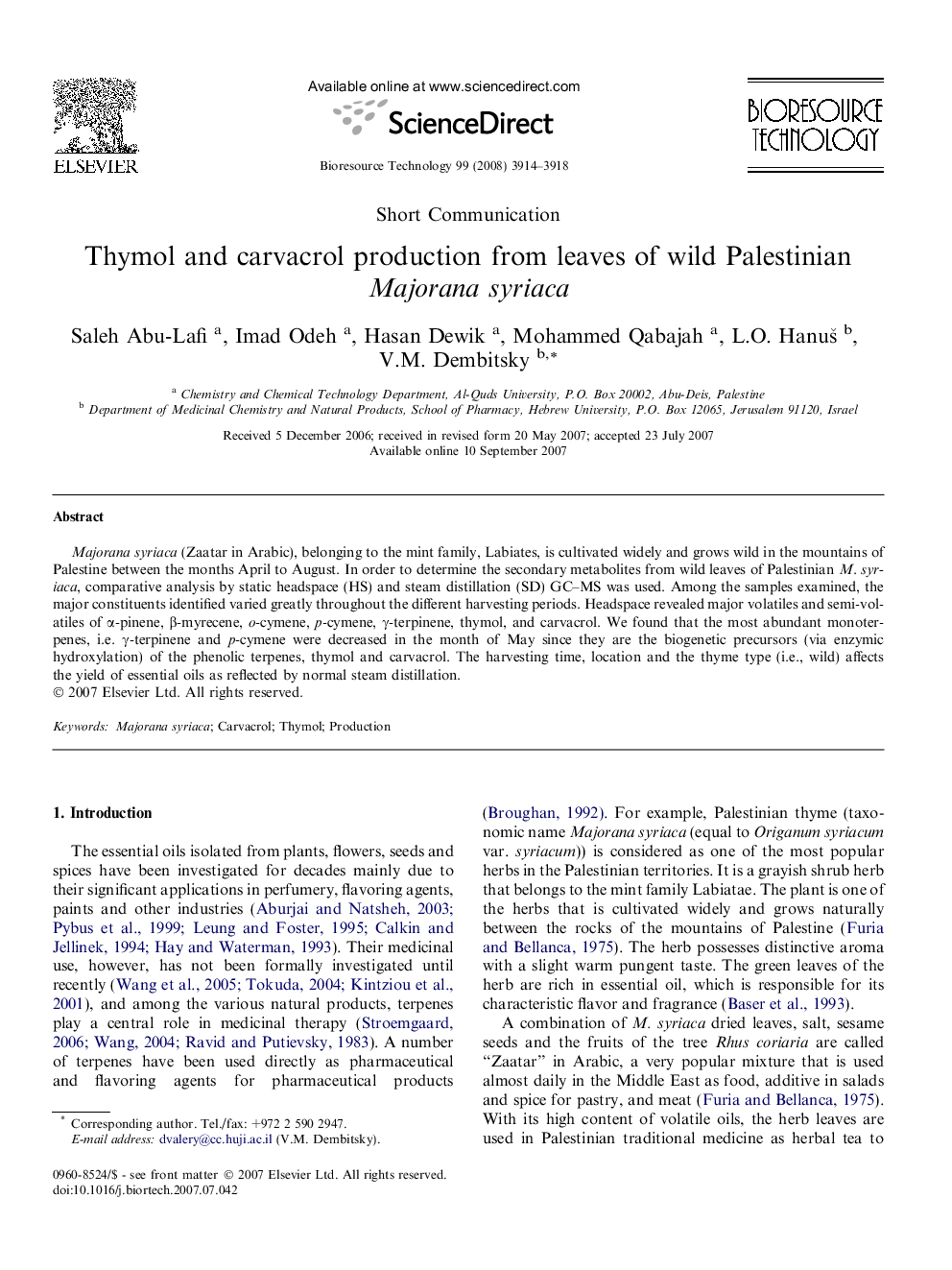| Article ID | Journal | Published Year | Pages | File Type |
|---|---|---|---|---|
| 686391 | Bioresource Technology | 2008 | 5 Pages |
Majorana syriaca (Zaatar in Arabic), belonging to the mint family, Labiates, is cultivated widely and grows wild in the mountains of Palestine between the months April to August. In order to determine the secondary metabolites from wild leaves of Palestinian M. syriaca, comparative analysis by static headspace (HS) and steam distillation (SD) GC–MS was used. Among the samples examined, the major constituents identified varied greatly throughout the different harvesting periods. Headspace revealed major volatiles and semi-volatiles of α-pinene, β-myrecene, o-cymene, p-cymene, γ-terpinene, thymol, and carvacrol. We found that the most abundant monoterpenes, i.e. γ-terpinene and p-cymene were decreased in the month of May since they are the biogenetic precursors (via enzymic hydroxylation) of the phenolic terpenes, thymol and carvacrol. The harvesting time, location and the thyme type (i.e., wild) affects the yield of essential oils as reflected by normal steam distillation.
